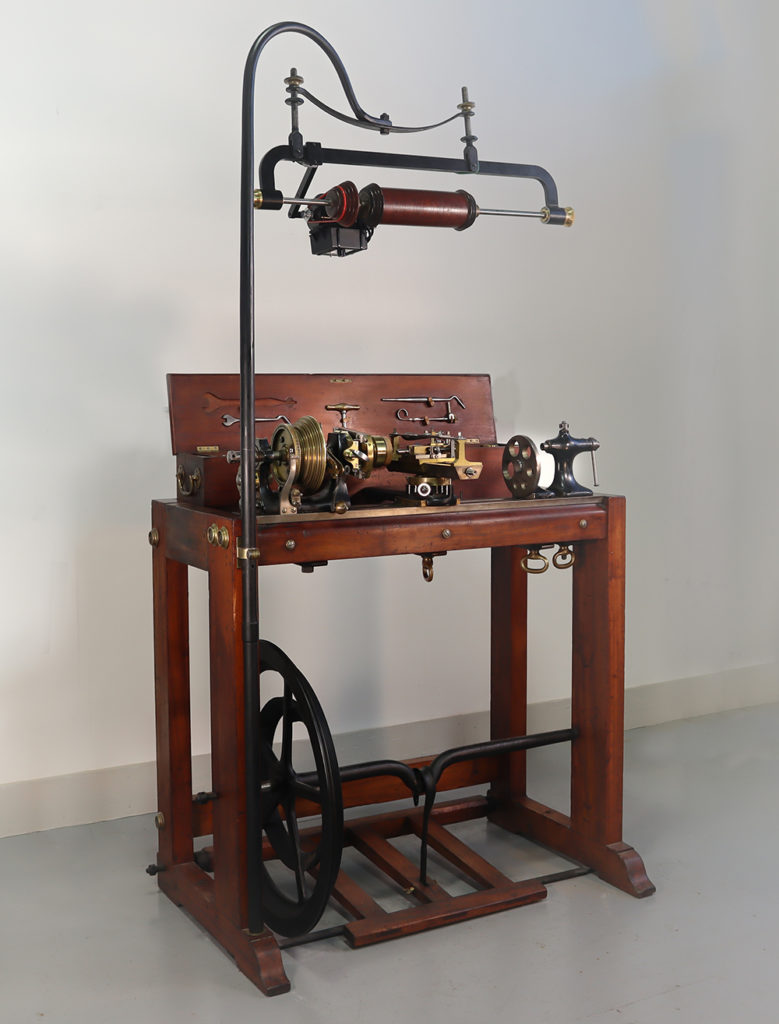However, Bill’s first ornamental lathe has quite a provenance. It was originally delivered on March 11, 1865 to W.F. Legh Esq., about whom we know virtually nothing. The second owner was Cyril Jackson Clarke Prescott Esq. who bought the lathe in 1883 and retained it until his death when it was returned to the Holtzapffel factory for resale. The third owner, Eustace H. Watson, bought the machine in 1918 to accompany a Goyen ornamental lathe that he also owned. It’s not clear when the lathe passed on from Watson to the next owner, Norman Tweddle. Mr. Tweddle was to play a major role in the history of modern ornamental turning. He became known for his skill as an ornamental turner and was one of the group which founded the Society of Ornamental Turners in 1948. Tweddle went on to write a practical book on use of the rose engine at a time when virtually no one knew what a rose engine was. To this day, Tweddle’s book remains the most substantial work on that topic. Number 2195 was one of three Holtzapffel lathes that Tweddle owned, one of the other two long assumed to be Holtzapffel’s first rose engine. Although it’s not known when No 2195 came into Tweddle’s possession, he used it until his death in 1953.
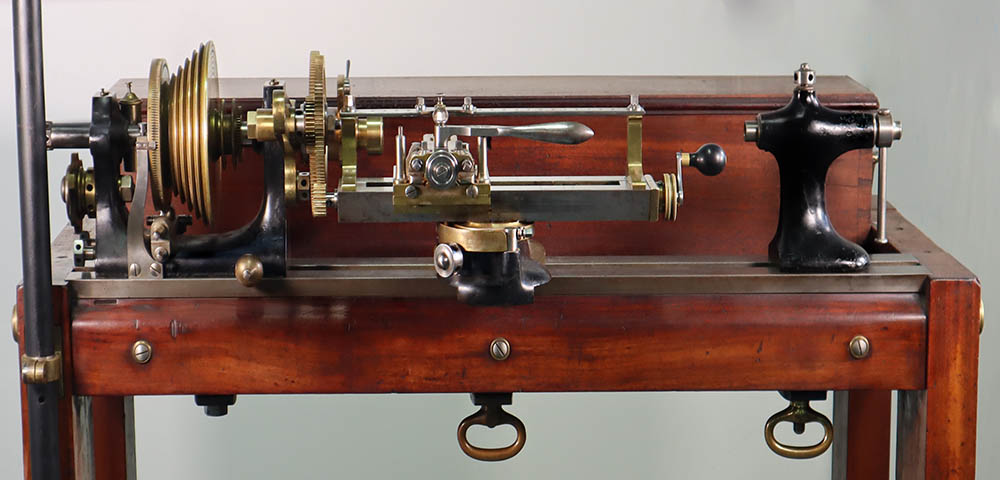
When Tweddle’s family liquidated his workshop, No. 2195 was purchased by an engineer named Geoffrey D. Roberts who brought it to America. As the story goes, Mr. Roberts and his friend Warren Ogden, Jr., another ornamental turning legend, stayed up all night unpacking and setting up the lathe. After this landing, the lathe made the trek from east coast to west and remained there until Bill encountered it in Seattle, fell in love, and got himself started on the journey that would lead to the Plumier Foundation.
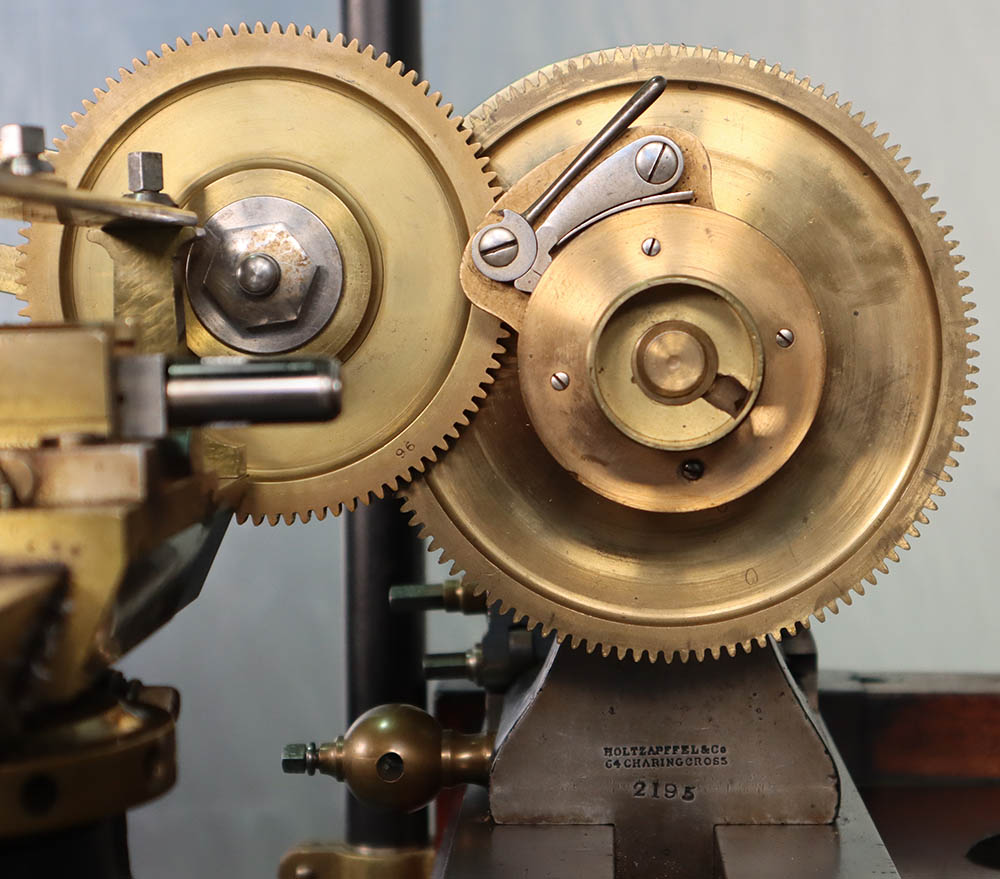

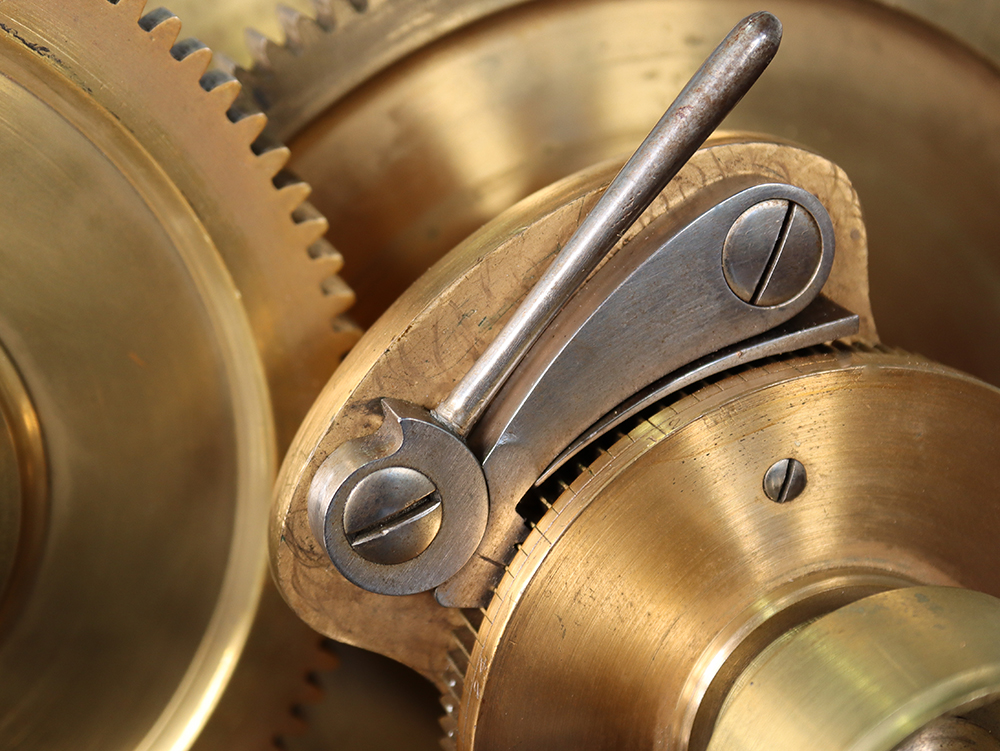
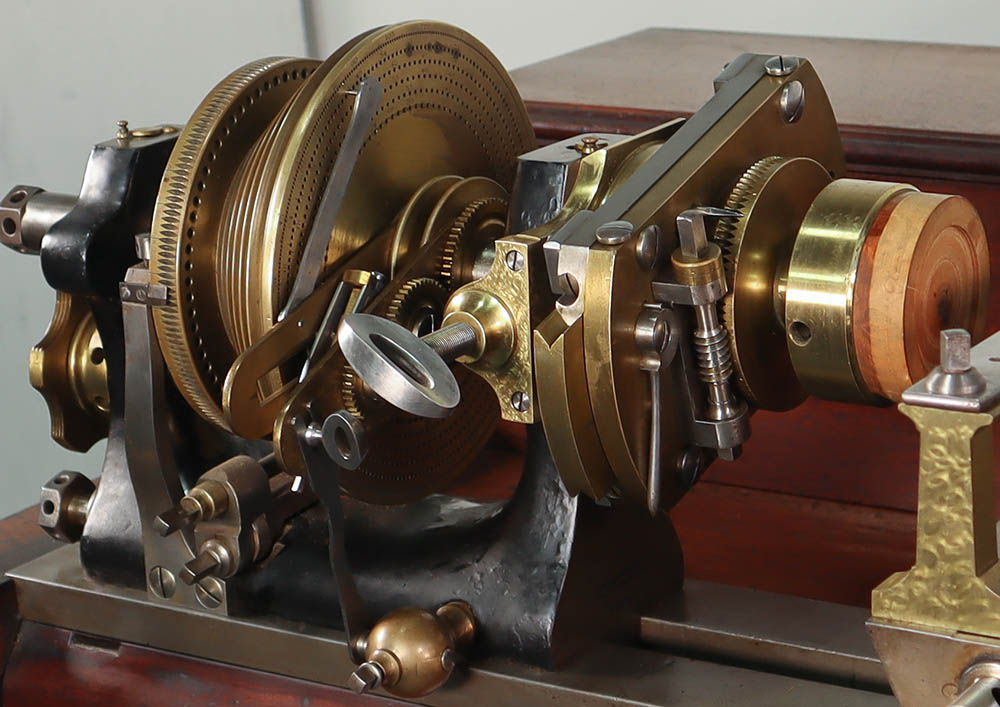

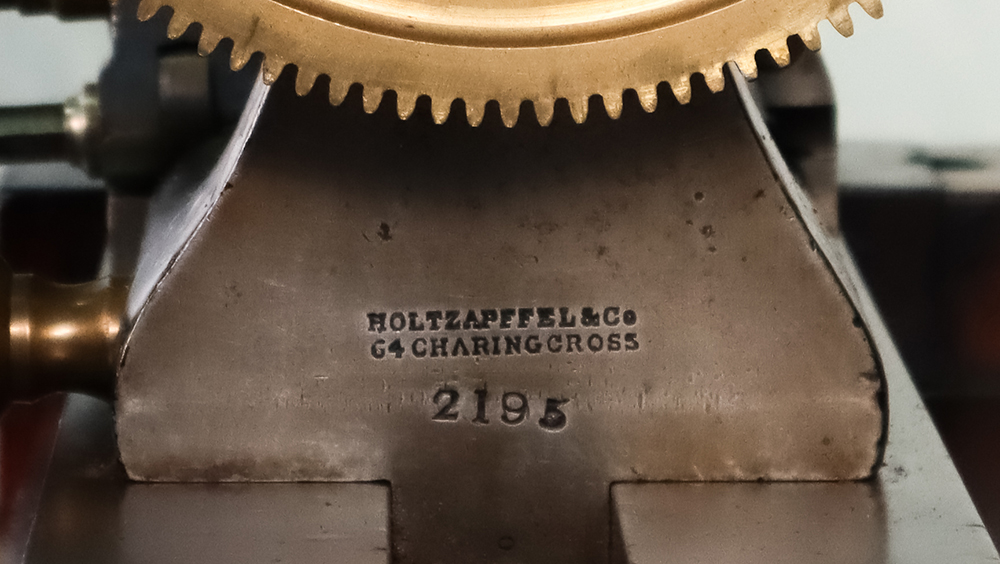
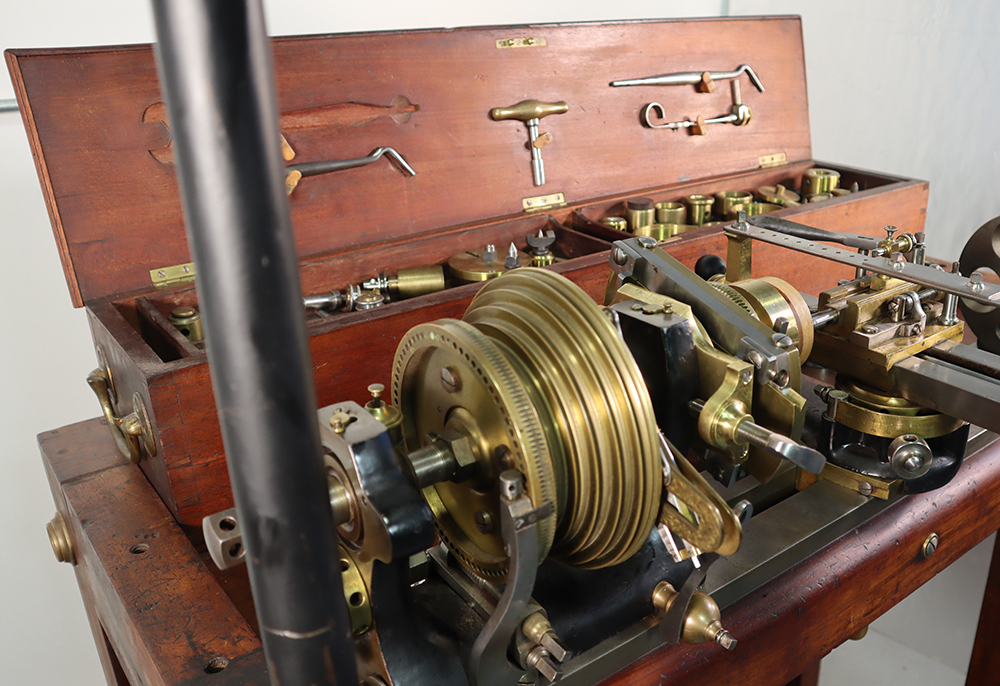
Sometimes we describe an object as “well loved” because it’s been largely unused and preserved in its original state. In the case of No. 2195, we use the expression because it was used as the builders intended it to be, providing long and accurate service to owners who used it with skill and care. Its patina reflects the love it received as do the accessories which were added throughout the years. In its present state is has a rectilinear chuck, elliptical chuck, eccentric chuck, dome chuck, oblique chuck, ornamental slide rest with curvilinear attachment, spiral headstock attachments for both front and rear mounting to which a reciprocator can be attached, threading hobs, elliptical compensator and various holding chucks. Despite the long use it has seen, it’s a very capable and willing lathe.
